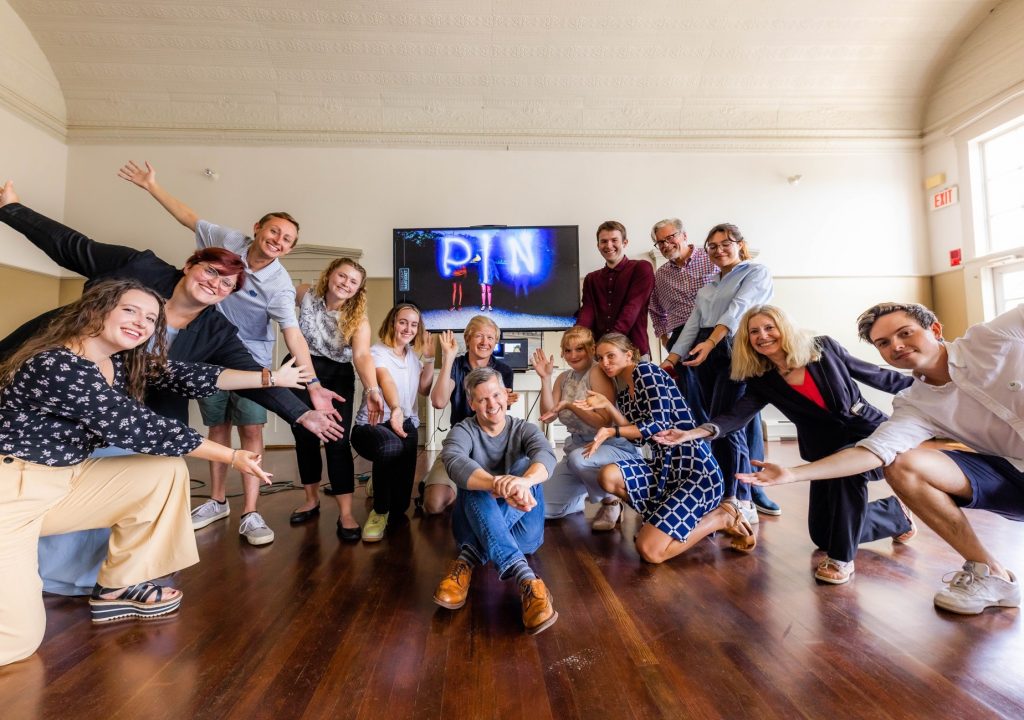By Drew Johnson, Bachelor of Sustainability and the Built Environment + Master of Historic Preservation Student (4+1)
I had the opportunity to be a part of the Summer 2021 Preservation Institute of Nantucket program that brought 10 students from various educational institutions and backgrounds to come together and present viable solutions to the town of Nantucket regarding sea level rise and the preservation of the historic structures that cover the island. We had six weeks to come together, research, and explore solutions that could be implemented on the island. The goal was to give the current groups (such as ReMain and ACKlimate), the Historic District Committee, and the public ideas to be able to push for changes on the island to ensure that people that come to the island decades from now can enjoy and appreciate the historic pre-civil war structures and design that still stand on the island today.
The island was originally settled as an escape from the mainland to create a different life for those that were able to make it. Met with Native Americans, Nantucket’s economy was originally built upon the ancient industry of whaling, which the island prided itself on for the longest time. It later became the reason for it’s own demise around the 1830s when they took advantage of the natives and their resources and nearly wiped out the whale population present on the eastern coast. After that, they turned towards tourism since the island had a better year-round climate in comparison to that of the main land. It has been described as being 10 degrees cooler in the summer and 10 degrees warmer in the winter. As a result, many issues arose spanning from getting accurate population counts of year-round residents and seasonal ones to the scarcity of a stable workforce. These would be the issues that we would be focusing on and keeping in mind when coming up with our potential solutions to suggest sustainable ways to preserve the history of the island, while preserving the diversity of it as well.
“Nantucket is a microcosm of the whole United States.”
-Ryan Lester
Research Areas and Topics
There were two phases that we had to focus on for our research areas, which first focused on research areas based on our educational backgrounds and the next focusing on specific locations within the Historic District. The research that we would do pertains to the suggestions made by previous PIN students, organizations throughout the island, and methods that have already been used. Sea level rise projections have shown that within the next 50 years, the northern shorelines of the island will be completely underwater, which would cover up all of the Historic District and nearly everything that Nantucket is known for. if nothing is done. This is where we come in to try and implement solutions that can mitigate the amount of disturbance in the building to maintain the historical accuracy and significance, while taking into account the rising sea levels.
Phase 1
For the first phase of research, we were split up into three separate teams to tackle overarching issues associated within the island and research area specific to Washington Street and the Creeks. My initial team focused on strategies to promote sustainable equitable solutions on the island and to outline its current conditions on the island. This involved us looking into the history of Nantucket’s situations with Native Americans and how they displaced and eventually overran them over time. We related this to how the rentals and residents are going against supporting the workforce that represents a large part of the island’s population. Taking a look at the trends over time and misrepresentation within published statistics about the island.
Phase 2
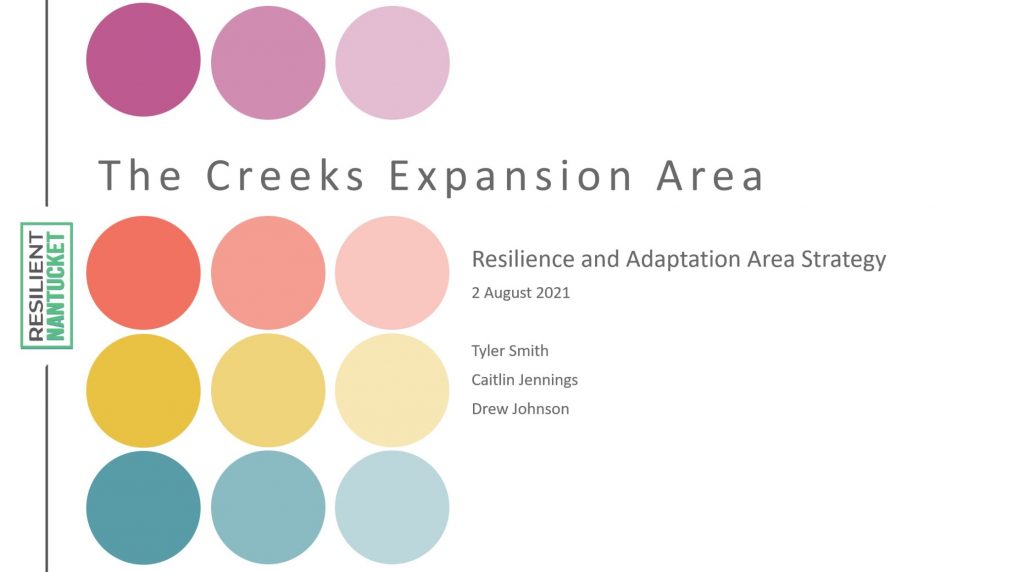
For the second phase of research, we were shuffled into another set of teams to focus on more specific areas within our research area to allow for a more direct impact on structures that lie within the Historic District. Our team was given the focus on the Great Harbor Yacht Club, which is known to be one of the more prominent clubs that donate to preservation programs such as the Land Council. These focus on rebuilding the shorelines and preserving the island’s ecology through the rebuilding, restructuring, and rehabilitating of natural ecosystems.
“It has to be up to my standards!!”
Tyler Smith
After a meeting with our director, we were notified that the Great Harbor Yacht Club wanted to double check with our presentation specifically to ensure that we don’t present the public with a flooded render of their buildings and properties. This was to ensure that they mitigate the chance of people not wanting to contribute to the club and to prevent any doubts about changes being made. We were also given the update that we would also be expanding our study area to extend towards the Creeks and other parcels to the east. This allows us to generalize our proposals for the short, mid, and long-term strategies that we would present to the public. It would allow us to not focus solely on changes that the Great Harbor Yacht Club should implement immediately.
Final Presentation
After 6 weeks of preparation, research, and revisions, the final presentation was the day we had all been working towards for this program. This would be presented in front of many high leveled individuals that range from the president of the National Parks organizations, those that are a part of Nantucket’s Harbor Plan, and a variety of property owners on the island. This PowerPoint presentation was the largest and the most important presentation I had ever given in front of a group of people. By August 6th, all of us were confident with our findings and were fully committed to informing Nantucket on the key issues of sea level rise, how they will be affected within the near future, and strategies that they can implement within the next few years that can help mitigate the damages due to Mother Nature reverting its landscapes.
The presentation came out to be 256 slides long, with everyone involved in the program speaking such as Marty Hilton, Bob Miklos, Linda Stevenson, and Alayna Jackson. They gave a great introduction to bring in the teams that were working within 3 different focus areas that were considered to be part of Nantucket’s most important areas by the tourists and residents. There were a total of 55 participants that came to watch the final presentation and it was one of the most heart racing experiences, but at the same time was not as stressful as I thought it was going to be. There were 12 people who were physically in the room and 43 that were on the zoom call during the presentation. This limited feeling of being overly intimidated with the sheer number of people that were watching us present our research and considerations for the island.
I would say that the presentation went the smoothest it had ever been in comparison to the previous rehearsals leading up to it. Despite all the changes we had to overcome within the last couple of weeks and days, we all pulled together to present our intensive research to the public in a cohesive manner and has hopefully made a statement in the urgency of dealing with these issues.
Reflection
Expectation vs. Reality
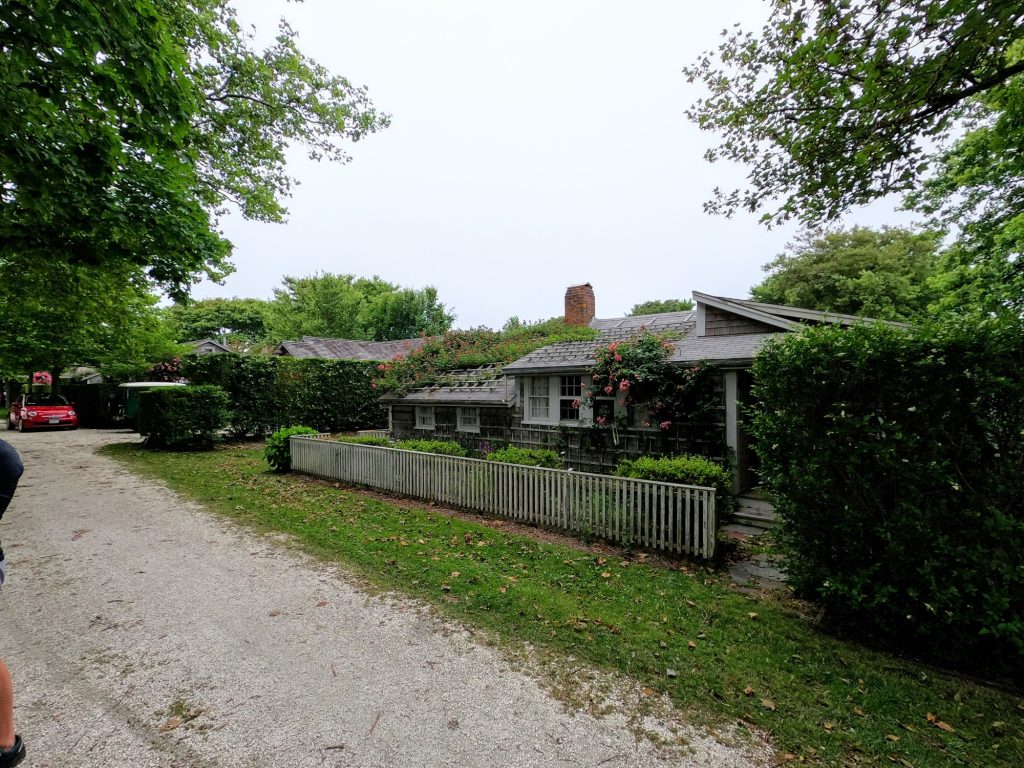
I didn’t have many preconceived notions on what Nantucket would be like before I got here since I didn’t really know it existed. I also didn’t realize how many movies have referenced it since it would fly right over my head whenever I heard the name. The main things I knew before coming were that it was an island 30 miles off the coast of Massachusetts and that it was really small. Other than that, I had no clue what the island looked like, what kind of road systems it contained, and whether I was able to bike or run anywhere on the island. I was definitely going in blind. I did a little bit of research before coming, but most of the information dealt with tourism and visiting the main areas of the Historic District along with traveling to the many beaches that surround the island.
Once I got here, it was almost like being a main character in a novel. I quickly learned about the basic statistics such as the median property value being $2.55 million and the average being much higher at $3.25 million as of 2019. This within itself was something I could not wrap my head around. All the different experiences we had were as if we were living in a fantasy; bunnies everywhere, walking to all of our destinations, and brushing shoulders alongside the many of the most wealthiest people I would probably ever not meet in my life.
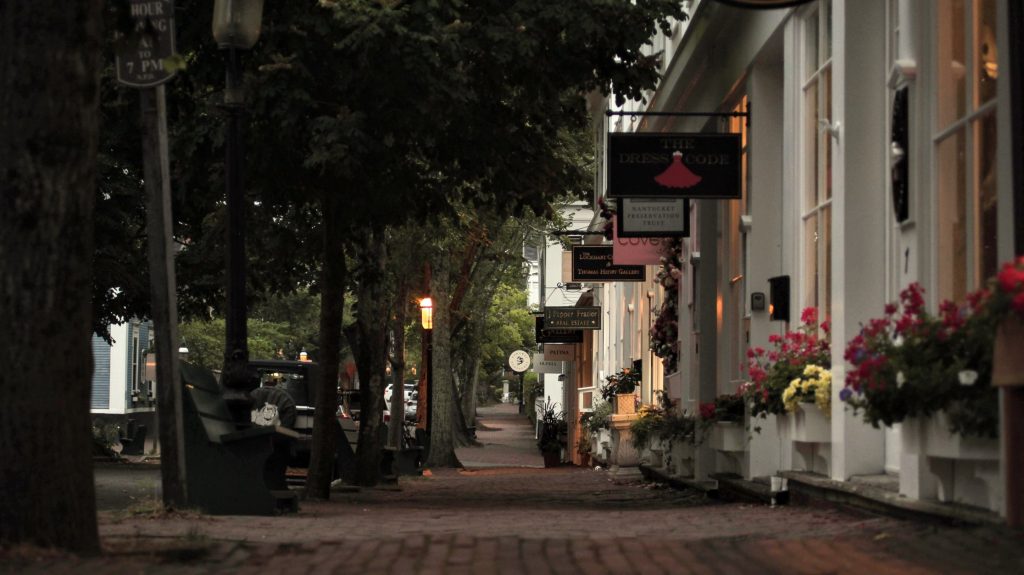
I knew things were going to be a lot more expensive here since this was an island with an economy based upon tourism, but I was quickly surprised about how expensive that made everything. Grocery shopping was one of the only ways we could grab a bite on this island without spending $100 a day. It was a quick shift in realization that we will be able to enjoy the tourist lifestyle for only a couple days before we had to be conscious about how much we spent here. We learned very quickly how to be thrifty, which also meant signing up for grocery rewards at the Stop and Shop.
It was a really fun game to try and guess the price range of entrees around the island as we passed by restaurants throughout the Downtown Historic District. When we would see the menus posted outside of the entrances of random restaurants, if they didn’t have the prices listed, we determined that eating there would be a minimum price of around $75, which we were right a majority of the time when guessing. It could get deceiving sometimes since some of the restaurants looked very similar to chain restaurants that were branded under a Nantucket lifestyle. (Note: Chain restaurants do not exist on Nantucket since the island voted to ban them from being placed there back in 2006.)
Daily Life
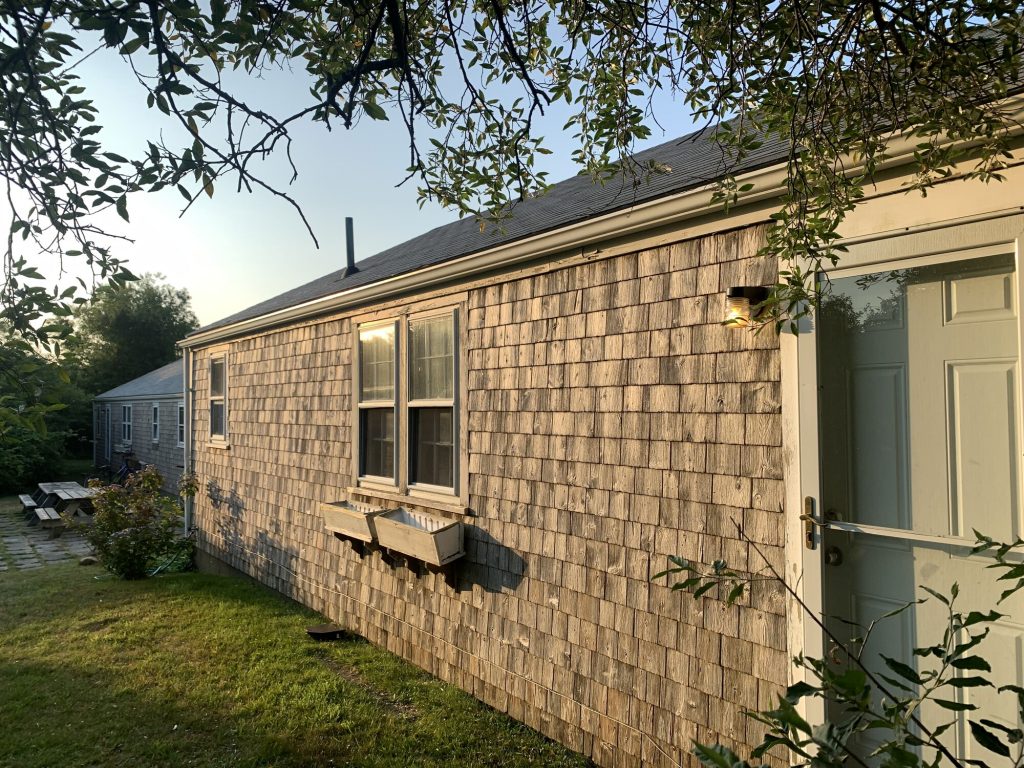
The dorms that we stayed in were a set of three houses that would be very similar to what the workforce in Nantucket would stay in, which gave us first hand experience on what being a resident would experience in the middle part of the island. Each dorm was fitted with a kitchen, dining table, and six rooms. This is where we slept, cooked, hung out, and worked on our presentations and research throughout our time on the island. They had everything we needed to be able to make it feel as homely as possible. Each room included a dresser, mirror, desk, bedside table, and of course, a bed. My room came with command hooks where I could hang my hat and my helmet.
The sun rises around 5:30am every single morning and was a like playing roulette regarding whether you would see actual sunlight or a foggy sky. It was one of the most interesting experiences to have during the summer where it hardly ever rained, in contrast to a typical rainy and humid Gainesville summer. Once the sun rises, the temperatures would stay comfortably at around 70-76, which was nothing to complain about when paired with the nice breeze every single day. It was actually the closest thing to perfection if you got up to exercise or enjoy a cup of coffee in the morning.
Since none of us had vehicles, we would walk or ride our bike everywhere around the island. There were very few occasions where we had to rely on a car to get places such as the island tour and reaching the other end of the island. We could have done it on our bikes, but we were not looking forward to the return trip back to the dorms after a long day of exploring. It was nice to be able to get around the island to anywhere we needed on foot since this was something we really couldn’t within the towns and cities that we come from due to our reliance on vehicular transportation. It made us appreciate the luxuries we have regarding owning vehicles and having public transport that works with us. It also pinpointed issues about city planning as well in terms of the lack of support for pedestrians and bikes throughout the areas of land that a majority of the workforce resides.
We would all make our way over to Sherburne Hall where the University of Florida shares the top floor with the Historic Preservation Trust of Nantucket at around 1:00pm every Monday to Thursday to discuss, meet, and work with individuals that are key to our success on our presentations. This is where we would get a majority of our progress done, so that it would minimize what we had to do when we were allowed to leave at around 4:00pm. Some of us would even stay back since it was a very nice space to keep us focused on our work without the distractions of the island.
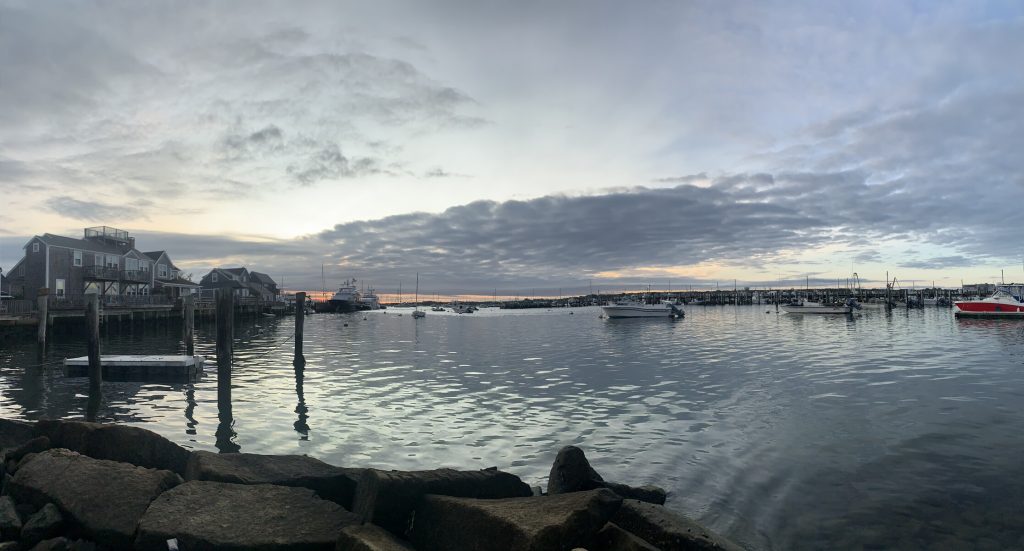
Outside of our mandatory studio hours, we were given free reign on how we chose to spend our time. Unless we had specific tasks we were given after class or before class, we would spend most of our days traveling and exploring the island at our own pace. This allowed us to see things at our own pace and experience parts of the island and see things that we wouldn’t normally be able to see as middle class mainlanders. This would include getting up early to go the bakeries, walking the soft sanded beaches, and even visiting prominent structures throughout the island.
Baking solves everything.
Elisabeth Staten
Reflection
Throughout our time here in Nantucket, we experienced and saw many things that we would normally never thought we would ever do. This would include getting to know the grid system of the Downtown Historic District, finding the best routes to certain stores, and enjoying the endless shoreline. It was fun to learn more than I would have ever thought I’d ever know about this small island off the coast of Massachusetts.
I am going to miss being able to wake up later than 8am to get prepared for the day and to be able to walk to the studio without having to rely on any other form of transportation other than my own two feet or a bike. Even though the town could have done a lot better in terms of making itself more pedestrian friendly, the ease of access to different parts of the island is convenient. I am appreciative of the comfortable summer temperature than the island provided to all of the students from the south (including me) as an escape from a normally hot, humid, Florida summer. This allowed us to enjoy being outside more and gave us a lot more willingness to go different places around the island without having to worry about dripping in sweat as soon as we stepped out the door.
I’d say that this program taught me a lot about being able to stay more open minded about the different issues that lie within other parts of the country. It gave me a sense of what works, what hasn’t worked, and what hasn’t been done and how that can result in feeling of panic rather than a feeling of adequate preparation. There were a lot of specific details that I didn’t realize our group had to consider such as the concern for public image to a Yacht Club regarding the retention of membership if we were to show models of their buildings being flooded. It made us realize that there were issues that we could not override due to the lack of power we have against those with money. This contributes to the downfall of certain aspects of society such as forward thinking and innovation to be able to present useful information to the public that allows them to realize that if nothing gets done now, then their current and future generations will only feel the consequences. We put forth as much useful information that we gathered from our research to be able to convey the urgency of sea level rise and it is up to them if they want to do something about it now, or allow the island to feel mother nature take back what was rightly hers to begin with.
Aside from all this, PIN was a very interesting program to be a part of. I am grateful for the friends I made and the experiences I gained from it. I wouldn’t keep the 50th anniversary of the Preservation Institute of Nantucket out of my mind, since that is next year…
